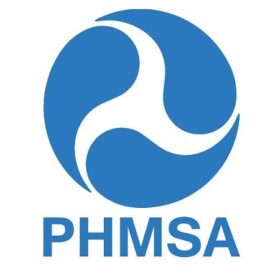
INGAA’s comments respond to the Commission’s NOI that was initiated as a result of the court’s holding in United Airlines, Inc. v. FERC that, “if FERC elects to impute partner taxes to the partnership pipeline entity, it must still ensure parity between equity owners in partnership and corporate pipelines.” The court was concerned that (1) a partnership pipeline incurs no taxes at the entity level apart from those taxes imputed from its partners; (2) a DCF ROE “determines the pre-tax investor return required to attract investment,” irrespective of the pipeline’s corporate form; and (3) “with a tax allowance, a partner in a partnership pipeline will receive a higher after-tax return than a shareholder in a corporate pipeline, at least in the short term before adjustments can occur in the investment market.” INGAA’s comments and testimony demonstrate that, despite the lack of entity level income taxation of MLPs, there is parity in the returns to investors in both MLP-owned and corporate-owned pipelines. This provides a sound basis for the Commission to buttress the existing record and conclude that the MLP tax allowance is necessary to permit MLP-owned pipelines to recover the actual tax liability associated with their taxable income.
INGAA witness Barry Sullivan explains that the Commission allows a tax allowance only for those income taxes paid or potentially owed by MLP unitholders (the MLP’s owners) which are attributable to the MLP’s taxable income, and that the MLP tax allowance is comparable to the tax allowance that allows corporate-owned pipelines to recover the tax liability associated with the corporate pipeline’s taxable income. The analysis in Mr. Sullivan’s testimony also demonstrates that the DCF ROE does not include an income tax allowance, and that an MLP pipeline must be allowed an income tax allowance in order to have the opportunity to recover its full cost of service, consistent with the policy set forth in the Supreme Court’s decision in FPC v. Hope Natural Gas Co.
INGAA witness Dr. Merle Erickson performs a life-cycle analysis of the overall tax liability associated with investments in both MLP-owned and corporate-owned pipelines. Dr. Erickson concludes that the tax liability for both MLP-owned and corporate-owned pipelines is very similar over the life of the investments. Dr. Erickson’s analysis allows the Commission to conclude that its current income tax allowance provides the parity between corporate and MLP pipeline investors required by the court in United Airlines.
INGAA’s comments, with the testimony of Dr. Erickson and Mr. Sullivan, address the court’s holding in United Airlines that the Commission, based on the record before the court in that proceeding, had “not provided sufficient justification for its conclusion that there is no double recovery of taxes for partnership pipelines receiving a tax allowance in addition to the discounted cash flow return on equity.” Dr. Erickson’s testimony demonstrates that the differences in tax recovery between investors in MLP-owned and corporate-owned pipelines are statistically insignificant over the life of the investment.
Mr. Sullivan’s testimony provides additional evidence to demonstrate that there is no double recovery associated with the MLP receiving both an income tax allowance and DCF-generated ROE. Mr. Sullivan explains that the Commission uses the DCF method to determine the just and reasonable ROE that a regulated pipeline may recover in its rates, and that the ROE generated by the DCF method does not include an income tax allowance for either MLP-owned or corporate-owned pipelines. The income tax allowance is instead treated as a separate line item in the pipeline’s cost of service. Mr. Sullivan further explains that the tax allowance is necessary for both MLP and corporate-owned pipelines to recover their cost of service and earn the ROE derived from applying the DCF method, and that granting an MLP tax allowance does not result in a double recovery.
Mr. Sullivan further provides an empirical analysis demonstrating that there is no double recovery of income taxes resulting from an MLP receiving both a tax allowance and DCF-derived ROE. Mr. Sullivan addresses witness testimony in the United Airlines evidentiary record that claimed that higher DCF ROEs for MLP pipelines were indicative of a double recovery of income tax costs. Mr. Sullivan updates an analysis submitted by certain shippers in that proceeding (SFPP Shippers) that was based on 2008 data. Based on current data, Mr. Sullivan concludes that the corporations included in that study currently have higher DCF ROEs than certain of the MLP pipelines included in the study. Mr. Sullivan also compares the DCF ROEs of existing interstate natural gas pipeline MLPs with their corporate affiliates that own a significant percentage of the units of the MLPs. He concludes that when these ROEs are analyzed over an extended period of time, the DCF ROEs for MLPs have not systematically exceeded the DCF ROEs for corporations, but have been generally comparable. Mr. Sullivan’s analysis demonstrates that there has been relative parity between the DCF returns on equity of MLPs and corporations. Mr. Sullivan’s analysis provides empirical support that, over time, inclusion of an income tax allowance for MLP pipelines does not result in systematically higher DCF ROEs for MLP-owned pipelines as compared to corporate- owned pipelines. Mr. Sullivan’s and Dr. Erickson’s testimony strongly supports the conclusion that the MLP income tax allowance, coupled with the DCF return, does not result in a double recovery of income taxes.
Mr. Sullivan further compares MLP distribution yields with corporate dividend yields for 23 entities that own significant jurisdictional pipeline assets for the period August 2007 to January 2017. Mr. Sullivan explains that these yields “have been in nearly constant flux since 2008,” and that “MLPs’ distribution yields have not been consistently higher than the corporations’ dividend yields.” The fact that the relative yields of MLPs and corporations have changed substantially since 2008 despite no change in the Commission’s tax allowance policy demonstrates that the tax allowance is not a significant factor affecting either MLP distribution yields or corporate dividend yields. Mr. Sullivan then compares the IBES growth rates for MLPs and corporations and finds that their respective growth rates have been comparable throughout the period January 2008 to January 2017. Mr. Sullivan shows that, during this period, IBES growth rates remained within a relatively narrow band for most of the companies and that IBES growth rates for MLPs were not consistently higher than for corporations. Mr. Sullivan concludes that nothing in the IBES growth rate indicates that MLPs receive an over-recovery as a result of an income tax allowance.
The Supreme Court in Hope emphasized that the Commission must balance the interests of the investor and the consumer, including providing returns to the investor that “assure confidence in the financial integrity of the enterprise, so as to maintain its credit and to attract capital.” In United Gas Pipe Line Co. v. Memphis Light, Gas and Water Division, the Court recognized that the NGA was concerned with the financial stability of natural gas companies. Eliminating the MLP tax allowance would shake the market’s confidence in MLPs and place them at a disadvantage as compared to corporate-owned pipelines.
Eliminating the tax allowance would also contravene Congress’s intent in providing for pass-through taxation for partnership pipelines. By authorizing pass-through taxation for MLPs, Congress created an incentive for investment in necessary infrastructure to provide oil and natural gas transportation. Eliminating the pass-through taxation would transfer the benefits that Congress intended to confer upon MLP investors to shippers, which would effectively remove the incentive Congress intended to encourage investment in energy infrastructure.
Download the full filing here.
| Additonal Documents |
|---|
| Summary of Sullivan's Testimony |
| Sullivan's Testimony |
| Erickson's Testimony |







